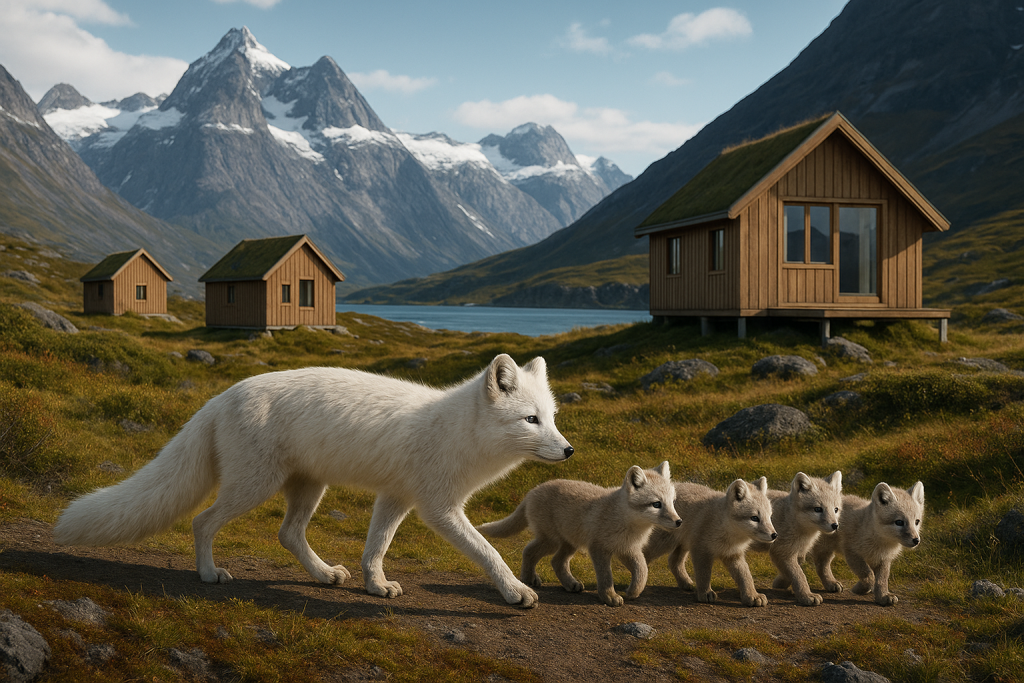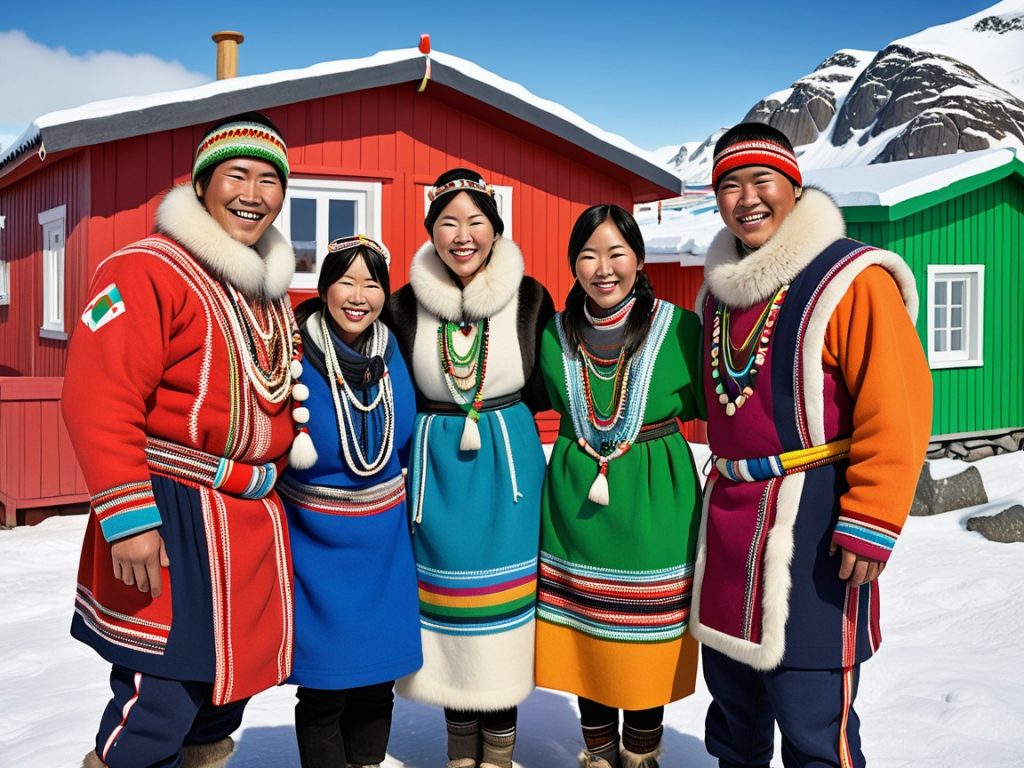In an era where over-tourism plagues many of the world’s natural wonders, Greenland emerges as an exceptional destination for the discerning traveller seeking both adventure and environmental responsibility. As the summer of 2025 approaches, this vast Arctic territory offers a rare combination of pristine wilderness experiences and sustainable tourism initiatives that merit serious consideration from eco-conscious explorers.
A Land of Ice and Contrasts
Greenland, the world’s largest island that is not a continent, presents visitors with a landscape of startling beauty and dramatic contrasts. The region’s most defining feature—its massive ice sheet—covers approximately 80% of the land mass and contains about 10% of the world’s freshwater reserves. This colossal natural formation serves as both a magnificent backdrop for adventure and a sobering indicator of our changing climate.
The summer months transform Greenland’s coastal regions into accessible wonderlands where travellers can witness the dynamic interaction between ice and ocean. The Sermilik Fjord region, home to specialised ecolodges, provides front-row views of massive icebergs calving from the Greenland ice sheet. These floating ice mountains—some towering higher than multi-story buildings—create a constantly changing seascape that captivates photographers and naturalists alike.
Ecological Significance and Responsible Tourism
Greenland’s ecological significance cannot be overstated. The island serves as a crucial habitat for diverse Arctic wildlife, including musk oxen, polar bears, Arctic foxes, and numerous bird species. Marine environments support multiple whale species, including humpback, minke, and the elusive narwhal, making whale watching a particularly rewarding activity during the summer season.
Tourism operators have recognised both the opportunity and responsibility that comes with facilitating visits to this fragile ecosystem. Companies like Natural Habitat Adventures offer stays in wilderness ecolodges designed to minimise environmental impact while maximising visitor engagement with the natural surroundings. These accommodations often incorporate renewable energy sources, waste reduction systems, and locally sourced materials—reflecting a commitment to sustainability that resonates with environmentally conscious travellers.
Cultural Heritage: Following Viking Footsteps
Beyond natural wonders, Greenland offers a fascinating cultural dimension. The southern region allows adventurous travellers to trace the footsteps of Erik the Red, the legendary Viking who established the first Norse settlements in Greenland during the 10th century. A 15-day backpacking expedition through South Greenland provides a unique opportunity to connect with this historical narrative while experiencing the landscape much as these early explorers did.
The indigenous Inuit culture adds another layer of richness to the Greenland experience. Local communities maintain traditional hunting and fishing practices while adapting to modern challenges, including climate change. Respectful interaction with these communities offers travellers insights into alternative ways of relating to the natural environment—knowledge that has become increasingly valuable as global society grapples with sustainability issues.
Accessibility and Practical Considerations
Despite its remote location, Greenland has become increasingly accessible to international travellers. Multiple tour operators now offer carefully planned itineraries that balance adventure with comfort. Companies like Intrepid Travel and Fifty Degrees North provide small-group experiences that minimise environmental impact while maximising cultural and natural engagement.
For those seeking a maritime approach, expedition cruises along Greenland’s northeast coast offer access to the world’s largest fjord system while providing opportunities to witness the ethereal northern lights that may appear even during summer months in these high latitudes. These specialised voyages typically employ environmentally responsible practices, including reduced emissions technology and strict waste management protocols.
The summer season, particularly July and August, presents optimal conditions for exploration, with temperatures averaging between 5-15°C (41-59°F) in coastal areas. The famous “midnight sun” phenomenon provides extended daylight for activities, with the sun remaining visible for up to 24 hours depending on location and date.

Environmental Challenges and Visitor Responsibility
Travellers to Greenland in 2025 must acknowledge the paradox inherent in visiting a region profoundly affected by climate change. The Greenland ice sheet has been losing mass at an accelerating rate, with satellite data indicating an average loss of 286 billion tons of ice per year between 2010 and 2018—a rate six times greater than in the 1980s. This melting contributes significantly to global sea-level rise, projected to reach between 10-30 cm by 2100 if current trends continue.
Responsible visitors can mitigate their impact by choosing operators with demonstrated environmental commitments, offsetting travel-related carbon emissions, and adopting low-impact practices during their stay. Many tour companies now incorporate educational components that help travellers understand these environmental challenges in context.
Distinctive Experiences for the Discerning Traveller
Several signature experiences define the Greenland summer adventure. Kayaking among icebergs offers an intimate perspective on these massive ice formations while providing potential close encounters with marine wildlife. Hiking across the tundra reveals surprising biodiversity, including delicate Arctic flowers that bloom intensely during the brief summer season.
For those seeking cultural experiences, visits to remote settlements provide opportunities to learn about traditional Inuit crafts, including soapstone carving and kayak building. Local festivals celebrating indigenous heritage offer authentic insights into Greenland’s living cultural traditions.
Photography enthusiasts find Greenland particularly rewarding, with the quality of light—enhanced by reflections from ice and water—creating extraordinary conditions for landscape and wildlife photography. The combination of massive ice formations, rugged mountains, and expansive skies creates compositions of remarkable power and beauty.
A Destination of Increasing Relevance
As we navigate an era of environmental uncertainty, destinations like Greenland offer more than spectacular scenery and adventure—they provide tangible evidence of our planet’s dynamic nature and the consequences of human activity on a global scale. A well-planned journey to this Arctic frontier in the summer of 2025 represents an opportunity for the environmentally conscious traveller to witness both natural majesty and ecological vulnerability firsthand.
For those willing to venture beyond conventional destinations, Greenland offers experiences of unparalleled authenticity and significance. As the island continues to develop its tourism infrastructure with an emphasis on sustainability, it stands poised to become a model for responsible travel in fragile environments—a consideration that may well appeal to the sophisticated traveller seeking both adventure and purpose in their journeys.


